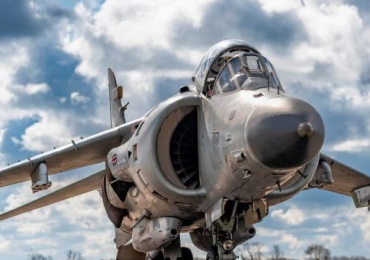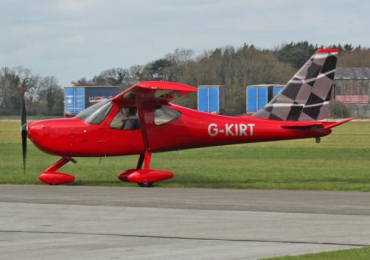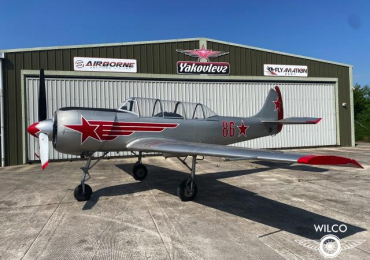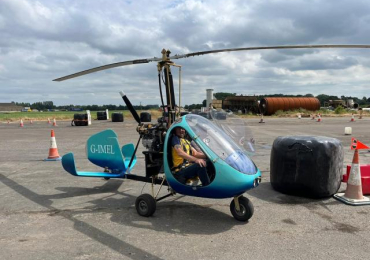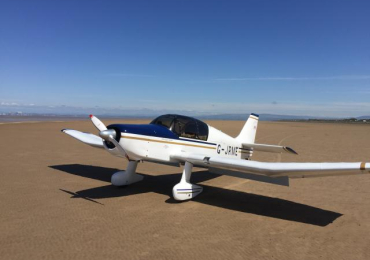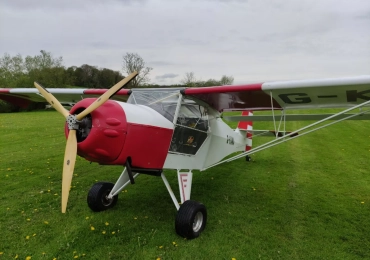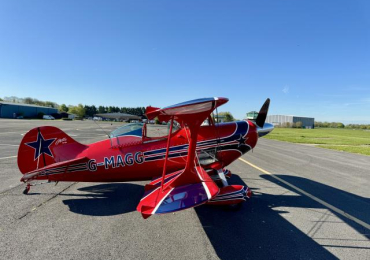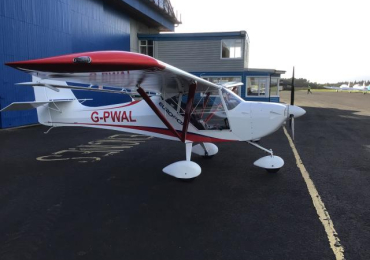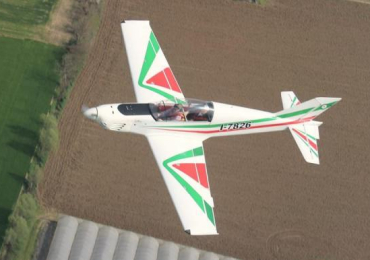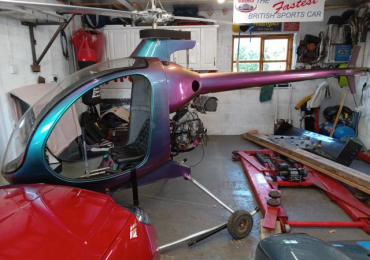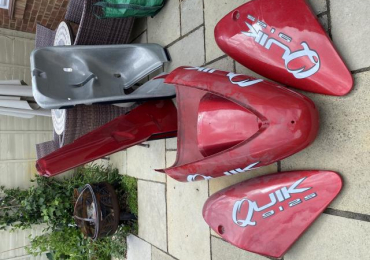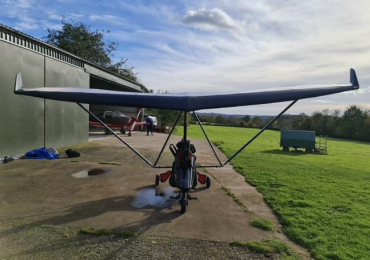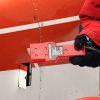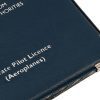Filter by Category
Light Aircraft For Sale
Light aircraft, often referred to as small general aviation aircraft, are designed for personal use, flight training, and short-haul transportation. …
Definition of Light Aircraft
The Federal Aviation Administration (FAA) defines light aircraft as any aircraft that falls within the category of general aviation and has a maximum certificated takeoff weight of 12,500 pounds or less. These aircraft are smaller in size compared to commercial jets and are primarily used for non-commercial purposes. Light aircraft come in various configurations including fixed-wing airplanes and rotary-wing helicopters.
Importance of Light Aircraft in Aviation Industry
The role of light aircraft in the aviation industry cannot be overstated. They serve as vital tools for flight training schools, allowing aspiring pilots to gain essential flying experience before advancing to larger commercial jets. Additionally, light aircraft provide individuals with a convenient mode of transportation for recreational purposes and business trips to remote locations not easily accessible by other means.
Overview of the Market for Light Aircraft For Sale
The market for light aircraft is diverse and dynamic, catering to a wide range of buyers with varying needs and preferences. Buyers can choose from new or pre-owned models based on factors such as performance specifications, avionics features, operating costs, and budget constraints. Online marketplaces, dealerships, auction houses, and brokers serve as key avenues for individuals looking to purchase light aircraft.
Types of Light Aircraft
Fixed-Wing Aircraft
Fixed-wing aircraft are a common type of light aircraft that rely on wings to generate lift as they move forward. Within the category of fixed-wing aircraft, there are several subtypes that cater to different needs and preferences.
One popular subtype is the single-engine piston aircraft, which is known for its simplicity and cost-effectiveness. These aircraft are usually used for recreational flying, flight training, or short-distance travel.
They offer a good balance between performance and affordability, making them a popular choice among aviation enthusiasts. Multi-engine piston aircraft, on the other hand, provide increased power and redundancy compared to their single-engine counterparts.
These aircraft are often utilized for business travel or transportation of small groups due to their higher speed and payload capacity. Pilots often opt for multi-engine piston aircraft when they require additional safety measures in case one engine fails during flight.
Turboprop aircraft combine the reliability of turbine engines with the efficiency of propellers to deliver a versatile flying experience. These light aircraft are known for their ability to operate from shorter runways while offering better performance than piston-powered planes.
Turboprops are commonly used for regional transportation, cargo delivery, and special missions where versatility and efficiency are paramount. Their unique combination of power and fuel efficiency makes them a preferred choice for many pilots looking to maximize their operational capabilities in various environments.
Rotary-Wing Aircraft (Helicopters)
Helicopters offer a distinct flying experience compared to fixed-wing aircraft due to their vertical take-off and landing capabilities. Within the realm of rotary-wing aircraft, there exists a differentiation between piston helicopters and turbine helicopters based on their power sources and performance characteristics. Piston helicopters typically feature simple designs with fewer mechanical complexities compared to turbine helicopters.
These helicopters cater more towards recreational users or light-duty operations where cost-effectiveness is prioritized over high-speed performance. Piston helicopters are favored by pilots seeking an affordable entry point into helicopter ownership while still enjoying the unique benefits that vertical flight offers.
Turbine helicopters represent the epitome of rotorcraft technology with powerful engines that enable faster speeds, greater payloads, and enhanced performance capabilities. These helicopters are commonly utilized in commercial operations such as emergency medical services, law enforcement patrols, executive transport, and aerial work missions where time-sensitive tasks necessitate swift aerial maneuvers.
Purpose of Use: Finding the Right Fit for Your Needs
When considering buying a light aircraft, the first crucial factor to contemplate is its intended purpose. Whether you are looking for a recreational plane to explore the skies on weekends, a training aircraft to earn your pilot’s license, or a business jet for efficient transportation between locations, defining your usage requirements is paramount. Recreational flyers may prioritize comfort and ease of handling, while training schools often seek aircraft with durability and safety features.
Business professionals might focus on speed and range to maximize productivity. Understanding your primary use case will guide you towards selecting a light aircraft that aligns with your needs and enhances your flying experience.
Performance Specifications: Balancing Speed, Range, and Payload
Performance specifications play a pivotal role in determining the suitability of a light aircraft for sale. Speed capabilities influence travel time efficiency, especially for business purposes where time is of the essence. Range indicates how far the aircraft can fly without refueling, crucial for long-distance journeys or cross-country flights.
Payload capacity dictates the amount of weight an aircraft can carry, including passengers and cargo. Balancing these factors is essential to ensure that the chosen light aircraft can meet your operational requirements without compromising safety or performance.
Operating Costs: Sustainable Flying Through Fuel Efficiency and Maintenance
Managing operating costs is a critical aspect of owning a light aircraft. Fuel efficiency directly impacts expenses related to flying, so choosing an economical model can lead to significant savings over time.
Regular maintenance is essential to keep the aircraft in optimal condition and prevent unforeseen breakdowns that could incur high repair costs. Understanding the maintenance schedule recommended by manufacturers and factoring in associated expenses will help you budget effectively for ongoing upkeep.
Evaluating operating costs comprehensively ensures sustainable ownership by minimizing financial burdens associated with fuel consumption and maintenance requirements. Note: Please let me know if you would like me to continue writing about other sections from this outline!
Where to Find Light Aircraft For Sale
Online Marketplaces
In today’s digital age, online marketplaces have become a popular hub for buying and selling various products, including light aircraft. Platforms such as Controller, Trade-A-Plane, and Aero Trader cater specifically to the aviation industry and offer a wide range of light aircraft listings.
These websites provide detailed information about each aircraft, including specifications, pricing, and contact details for sellers. Buyers can easily compare different models and prices from the comfort of their own homes before making a purchase decision.
Aircraft-specific Websites
For more specialized searches, aircraft-specific websites like Barnstormers and GlobalAir.com are excellent resources for finding light aircraft for sale. These platforms focus solely on aviation-related listings, offering a comprehensive selection of new and used aircraft from individual sellers as well as dealerships.
Users can filter their search based on criteria such as make, model, year, and price range to narrow down their options quickly. Additionally, these websites often feature additional resources such as maintenance tips, insurance information, and financing options to assist buyers throughout the purchasing process.
General Classifieds Websites
While not exclusive to aviation sales, general classifieds websites like eBay Motors and Craigslist also serve as viable options for finding light aircraft for sale. Sellers may list their aircraft alongside other goods in these platforms, providing buyers with a diverse selection to choose from.
However, due diligence is crucial when using general classifieds websites to ensure the legitimacy of sellers and the quality of the listed aircraft. It is recommended that buyers thoroughly research the seller’s reputation and ask for detailed documentation before proceeding with any transactions.
Auction Houses
Auction houses present another avenue for purchasing light aircraft at competitive prices. Both physical auction events and online auctions hosted by companies like Sotheby’s or Bonhams occasionally feature aviation lots that include airplanes or helicopters.
Participating in an auction can be an exciting way to acquire a light aircraft while potentially securing a good deal. Buyers should familiarize themselves with auction processes beforehand and set clear budget constraints to avoid overspending during bidding.
Dealerships and Brokers
Dealerships specializing in aviation sales often have an extensive inventory of new and pre-owned light aircraft available for purchase. Working directly with reputable dealerships provides buyers with access to expert advice regarding different models’ features, performance characteristics, maintenance history—and even financing options tailored specifically for purchasing an airplane or helicopter. Brokers act as intermediaries between buyers and sellers in the aviation market—leveraging their industry knowledge to assist clients in finding the perfect match within their desired budget range while handling negotiations on their behalf.
Cessna
Cessna is a renowned name in the light aircraft industry, known for its exceptional quality and reliability. One of the most popular models from Cessna is the Cessna 172 Skyhawk.
The Cessna 172 has been a mainstay in aviation training for decades, favored for its ease of handling and robust design. It is a versatile aircraft that can be used for both training purposes and recreational flights.
The Cessna 172 Skyhawk boasts a durable airframe, efficient performance, and excellent stability, making it an ideal choice for pilots of all levels. Another standout model from Cessna is the Cessna Citation M2.
The Citation M2 is a sleek and modern light jet that combines performance and luxury seamlessly. With cutting-edge avionics systems and powerful engines, the Citation M2 offers exceptional speed, range, and comfort.
This jet is perfect for business travelers looking to reach their destinations swiftly and comfortably. The interior of the Citation M2 is designed with elegance and functionality in mind, providing passengers with a first-class flying experience.
Piper
Piper Aircraft has also made a significant impact in the light aircraft market with its innovative designs and reliable performance. The Piper Archer LX is a top choice among pilots seeking an efficient and capable single-engine piston aircraft.
Known for its economical operation costs and user-friendly cockpit layout, the Archer LX is ideal for both training missions and cross-country flights. Its advanced avionics suite enhances situational awareness and safety during flights.
For those looking to step up to a more advanced model, the Piper M600 SLS stands out as an exceptional option in the turboprop category. The M600 SLS offers impressive speed, range, and payload capacity combined with state-of-the-art safety features like Autoland technology.
Pilots appreciate the spacious cabin layout that provides ample room for passengers to relax during long journeys while enjoying panoramic views through large windows. The Piper M600 SLS sets a new standard for luxury turboprop travel.
Engine Inspection
When inspecting a used light aircraft’s engine, it is crucial to start with a thorough examination of the engine compartment. Check for any signs of oil leaks, corrosion, or unusual wear and tear.
It is also important to review the maintenance records to ensure that regular servicing has been conducted as per the manufacturer’s recommendations. A compression test should be performed to assess the health of the engine cylinders and detect any potential issues with compression loss.
Furthermore, examining the exhaust system for cracks or damage is essential as any issues in this area can lead to safety hazards and performance issues. The spark plugs should be inspected for signs of fouling or malfunction, as they play a critical role in the ignition process.
Additionally, checking the condition of filters and hoses, as well as verifying proper functioning of cooling systems and fuel lines, are vital steps in ensuring that the engine is in optimal working condition. Conducting a thorough run-up test on the engine is another important aspect of inspection.
This test allows you to assess how well the engine starts up, runs at different power settings, and responds to throttle inputs. Any irregularities such as rough idling or abnormal vibrations should be investigated further before considering purchasing the aircraft.
Airframe Inspection
The airframe inspection is a crucial part of assessing a used light aircraft’s overall condition and safety. Begin by visually inspecting the exterior surfaces of the aircraft for any signs of corrosion, dents, or paint damage that could indicate structural issues or poor maintenance practices. Pay close attention to key structural components such as wings, fuselage, empennage (tail section), and landing gear.
Next, examine the control surfaces including ailerons, elevators, rudders, flaps for proper alignment and freedom of movement. Any binding or stiffness in these controls could indicate underlying problems that need immediate attention.
Inspecting all fasteners and attachments for security is essential to ensure that critical components are properly secured and aligned. Inside the cockpit area, check for any signs of wear on seats, instrument panels, control yokes or pedals which may indicate excessive use or neglect.
Ensure all gauges are functional by performing an instrument panel check including testing avionics equipment like radios and navigation systems. Perform a thorough check on all accessible areas within compartments like baggage areas looking out for debris or signs rodents presence which could cause unexpected damages due their infestation
Avionics Check
The avionics system plays a critical role in modern light aircraft operations; therefore thoroughly inspecting this component is imperative when assessing a used aircraft for purchase consideration. Begin by powering up all avionics equipment including radios,
GPS units,datalinks,and transponders ensuring they boot up correctly without displaying error messages.Furthermore ,check various functions such nav/comm units,collision avoidance systems,and autopilot if equipped.To ensure accuracy perform radio checks using ATC frequencies testing both transmit/receive functionality. Additionally ,verify that all displays such PFD (Primary Flight Display) & MFD (Multifunction Display) functioning properly with no dead pixels by cycling through different screens modes.
Check integrity wiring harnesses behind panels visible looking out loose connections,bare wires,pinched cables.Know exactly which repairs would cost more before buying ,request maintenance logs records last avionic upgrades/repairs done.If logs show consistent updates it indicates owner cared about upkeep;If lack comprehensive record keeping it raises red flag suggesting neglected maintenance practices
Documentation Review
The documentation review aspect when purchasing used an light aircraft cannot be overemphasized .Start off by requesting complete copies records from current owner/operator.These documents include but not limited FAA registration certificate,past maintenance records logbooks,current airworthiness certificate,last annual inspection report,factory manuals pilot’s operating handbook ,parts catalogues & service bulletins.It’s also important FAA Form 337s showing previous modifications /repairs legally documented Moreover closely scrutinize Airworthiness Directive (AD) compliance reports determining whether required inspections/repairs have been done timely adhered.Lastly checking current insurance policy covering not only airplane but also its components confirming coverage adequate safeguards potential risks can save headaches down road It imperative purchase used light sort from reputable dealer obtain professional pre-purchase assessment assessment independent mechanic specialized make/model verification facts stated seller true making informed decision during process
Financing Options for Buying a Light Aircraft
Bank
When it comes to financing the purchase of a light aircraft, one of the most common options is securing a loan from a bank. Banks that specialize in aviation financing understand the unique needs of aircraft buyers and offer competitive rates and terms. To apply for an aircraft loan, you will typically need to provide financial documentation, details about the aircraft you plan to purchase, and information about your flying experience.
Banks may require a down payment, and the loan term can vary depending on factors such as the age of the aircraft and your creditworthiness. It’s important to shop around and compare offers from different banks to ensure you get the best deal possible.
Conclusion
Buying a light aircraft is not just a transaction—it’s an investment in freedom, exploration, and endless possibilities. The process of finding the right aircraft for your needs, evaluating financing options, and making the purchase can be both exciting and challenging. However, with careful research, thorough inspection, and smart financial planning, owning your own light aircraft can become a reality.
So take to the skies with confidence, knowing that every journey you embark on in your own aircraft is filled with boundless opportunities and unforgettable experiences. Fly high and dream big!
Light Aircraft For Sale
Ever wondered how owning a light aircraft or helicopters could redefine your sense of freedom in the aviation industry, especially when selecting aeroplanes to pilot? The sky’s no longer the limit when you delve into the aviation industry’s market for light aircraft, including helicopters and selecting aeroplanes, for sale across various aviation categories. With the right choice of selecting aeroplanes or helicopters from your aircraft collection, you can soar above the clouds on your terms in a winged aircraft, exploring landscapes from a breathtaking aerial view that few have the privilege to witness. It’s not just about the luxury of winged aircraft flight in the aviation industry; it’s about the unparalleled sense of independence new aircraft and helicopters bring. Whether you’re a seasoned aviator or a newcomer with sky-high aspirations, navigating the market for these magnificent winged aircraft, including helicopters, within various aviation categories through an aircraft sales network can seem daunting. Yet, with expert insights from Wilco Aviation and a clear understanding of aviation categories, including helicopters and what to look out for, securing your very own light aircraft through Way Afors is closer to reality than you might think.
Key Takeaways
Exploring various types of light aircraft, including helicopters and other aviation categories, will help you identify which model best suits your needs, whether for leisure, travel, or business purposes, and its use afors.
Key purchase considerations, such as aircraft condition, maintenance history, and avionics, are crucial for ensuring safety and value for money.
Always inspect a plane thoroughly before buying, preferably with the help of an experienced mechanic or appraiser, to avoid costly repairs down the line.
Understanding aircraft prices involves recognising factors that influence cost, including age, condition, and market demand, to make an informed financial decision.
Evaluating your first aircraft purchase requires careful consideration of your flying skills, budget, and what you intend to use the aircraft for.
Financing your purchase can be complex; exploring different options like loans or leasing can help you manage the financial burden, while shared ownership can significantly reduce costs.
Navigating the market effectively means staying informed about trends, seeking advice from experts, and taking your time to find the best deal that matches your requirements.
Exploring Light Aircraft Types
Single-Engine Planes
Single-engine planes stand as the cornerstone of light aircraft sales. These winged aircraft offer simplicity and efficiency, making them a popular choice within the general aviation community. AT Aviation showcases a variety of single-engine models, each with unique aircraft specifications listed on afors that cater to different flying needs. The Tecnam P2010 EI-HKI, for example, features advanced avionics and a comfortable cabin, ideal for both training and personal travel.
The appeal of single-engine planes lies in their lower maintenance and operational costs. Pilots appreciate the straightforward handling and reliability these aircraft provide. Moreover, their versatility allows for various applications, including leisure flights and light cargo transport.
Multi-Engine Aircraft
Multi-engine aircraft introduce added power and redundancy, elevating the safety and capability of light aviation. These models are often sought after by pilots looking to expand their skills or undertake more demanding flights. The Piper PA-32R 300 Lance G-VALL is a prime example from AT Aviation’s inventory, offering robust performance alongside spacious accommodation.
Choosing a multi-engine plane comes with considerations such as higher costs and more complex maintenance routines. However, the benefits of improved performance, increased payload capacity, and enhanced safety features make them an attractive option for many in the aviation industry.
Specialised Models
Beyond traditional single and multi-engine planes, the market includes specialised models catering to niche interests. The Morane MS-760 Paris IIB N760X represents such a category, boasting jet-powered speed and agility uncommon among light aircraft. This model appeals to enthusiasts seeking exceptional performance and the thrill of jet flight within a more accessible framework than commercial jets.
Specialised models often feature unique capabilities like the optional glider tow plane functionality, expanding their utility and appeal within specific segments of aviation. Whether for sport, business, or leisure, these aircraft offer tailored experiences that standard models cannot replicate.
Key Purchase Considerations
Engine Hours
Understanding the engine hours and maintenance history of a light aircraft is crucial before making a purchase. For instance, the Morane MS-760’s engine might have 633 / 659 SMOH (Since Major Overhaul Hours), indicating how many hours the engine has operated since its last major overhaul. This figure gives potential buyers insight into the life expectancy of the aircraft’s engine and an estimate of upcoming maintenance costs.
Aircraft with lower SMOH values are often more appealing as they suggest less wear and tear. However, a well-documented maintenance history can be just as important. It provides a clear record of the aircraft’s upkeep and any repairs or replacements made over its lifetime.
Aircraft Condition
When considering light aircraft for sale, assessing the condition, age, and performance capabilities is essential. The physical state of the aircraft can significantly impact safety and operational costs. Look for signs of corrosion or damage to the airframe which could indicate neglect or exposure to harsh environments.
The age of the aircraft also plays a significant role in its value and performance. Older models may require more maintenance and might not perform as efficiently as newer ones. However, vintage aircraft hold a certain charm and historical value that may appeal to some buyers.
Performance capabilities should match your flying needs. Whether it’s cruising speed, range, or payload capacity, ensure the aircraft meets your requirements for both short trips and longer journeys.
Expert Advice
Consulting with knowledgeable sales teams, like those at AT Aviation, can lead to more informed decisions when purchasing a light aircraft. These professionals provide valuable insights into market trends, pricing, and the best models suited to your specific needs.
They can also offer guidance on regulatory compliance and paperwork necessary for ownership transfer. With their expertise, you can avoid common pitfalls and find an aircraft that best matches your budget and flying aspirations.
Inspecting Before Buying
Professional Inspection
A thorough pre-purchase inspection by qualified professionals is crucial. It helps avoid costly repairs and safety issues down the line. Specialists can spot problems that may not be visible to the untrained eye. This step follows naturally after considering key purchase aspects.
Professionals will examine the aircraft’s structure, engine, avionics, and other critical systems. They ensure everything is in working order or identify what needs attention. This scrutiny saves money and enhances safety for future flights.
Showroom Visits
Visiting showrooms like AT Aviation at Solent Airport offers a firsthand look at light aircraft for sale. These visits allow potential buyers to inspect the aircraft up close. They can assess its condition and suitability for their needs.
Showrooms provide an opportunity to see various models side by side. Buyers can compare features and get a feel for each aircraft’s size and comfort level. Such visits are invaluable for making informed decisions.
Maintenance Records
Asking detailed questions about an aircraft’s history is essential. Maintenance records reveal much about its upkeep and any previous issues. Buyers should inquire about regular maintenance schedules, any significant repairs, and if the aircraft has ever sustained damage.
These records offer insights into how well the aircraft has been cared for. They also highlight potential future maintenance needs or costs. Understanding an aircraft’s history ensures buyers know exactly what they are investing in.
Damage History
Inquiring about previous damages or repairs is another critical step. Even minor incidents can have lasting impacts on an aircraft’s integrity and performance. Buyers need to know about any past accidents, repairs, or modifications made to the aircraft.
This information helps gauge the aircraft’s current condition and its value. It also informs buyers about any additional inspections or certifications that might be necessary before purchase.
Understanding Aircraft Prices
Engine Hours
Engine hours significantly impact light aircraft prices. Lower engine hours often suggest less wear and tear, leading to a higher asking price. For instance, an aircraft with under 1,000 flight hours can be considerably more expensive than one with over 2,500 hours on its engine. Buyers should weigh the cost against potential future maintenance.
Aircraft with recently overhauled engines may also command higher prices. This reflects the substantial investment in ensuring the engine’s reliability and longevity.
Aircraft Condition
The overall condition of a light aircraft plays a crucial role in its market value. A well-maintained plane, showing meticulous care in its exterior and interior, can attract premium pricing. Examples from AT Aviation reveal that aircraft with updated avionics and pristine interiors often list at higher prices than those showing signs of wear or outdated technology.
Buyers must scrutinize the aircraft’s maintenance records and physical condition. This diligence helps in understanding whether the asking price aligns with the aircraft’s state.
Market Demand
Market demand influences light aircraft prices dynamically. Popular models or those known for reliability and efficiency tend to retain their value better. For example, certain Cessna or Piper models listed on AT Aviation exhibit less depreciation due to their enduring popularity among pilots.
Seasonal trends also affect aircraft prices. Demand can spike during spring and summer, driving prices up. Conversely, buyers might find better deals during the off-peak winter months.
Value Assessment
Assessing a light aircraft’s value requires considering its age, specifications, and how these factors compare to the asking price. Buyers should investigate similar models’ prices on AT Aviation to gauge market rates. This comparison offers insight into whether a listing is priced fairly for what it offers.
It’s essential to factor in potential upgrade or repair costs. An older aircraft with a lower price might seem appealing but could entail significant additional investment to meet safety standards or personal preferences.
Evaluating Your First Aircraft
Essential Features
When selecting aeroplanes, first-time buyers must balance essential features with desirable extras. It’s crucial to prioritize aircraft functionality over luxury to stay within budget while meeting your flying goals.
Buyers should focus on the aircraft’s condition, maintenance history, and engine performance. Quality aircraft offer reliability and safety, paramount for new pilots. Engine planes with a solid track record in these areas provide a good foundation for your aviation journey.
Forgiving Aircraft
For novice pilots, starting with a versatile and forgiving aircraft is key. Such planes make handling and learning easier, boosting confidence in the skies. They allow pilots to focus on honing their skills rather than managing complex systems.
Aircraft known for their stability and ease of control are ideal. These qualities reduce the likelihood of errors during flight, making them perfect aircraft for beginners.
Experienced Advice
Seeking advice from experienced pilots and sales professionals is invaluable. Companies like AT Aviation have a deep understanding of the aviation sales field and can guide you towards the best starter aircraft.
Qualified pilots can share insights from their own experiences, highlighting which aircraft served them well. Their recommendations can steer you away from common pitfalls in aircraft selection.
Aviation Sales Network
Leveraging an aircraft sales network offers access to a broader range of options. These networks feature listings from various sellers, including private owners and dealerships.
Exploring options at places like Sale Fishburn Airfield exposes buyers to different aircraft types. This diversity helps in finding an aircraft that matches your specific needs and preferences.
Financing Your Purchase
Finance Partnerships
AT Aviation’s collaboration with Buckley Aircraft Finance offers a unique opportunity for pilots looking to invest in light aircraft. This partnership provides flexible finance options tailored specifically for the aviation industry.
Pilots can benefit from competitive rates and terms designed to fit various budgets and needs. Such partnerships make owning an aircraft more accessible, allowing pilots to spread the cost over time. This approach not only makes financial planning easier but also opens up possibilities to acquire higher-quality aircraft that may have been out of reach if paying in full upfront.
Application Process
Understanding how to navigate the application process for aircraft financing is crucial. Prospective buyers should start by gathering necessary documents, including proof of income, credit history, and details about the aircraft they intend to purchase.
Applying through institutions like Buckley Aircraft Finance involves a thorough assessment of the applicant’s financial health and the aircraft’s value. It’s essential to read and understand all terms and conditions before agreeing to a finance plan. Knowing the interest rates, repayment terms, and any potential penalties for early repayment can help avoid surprises down the line.
Advantages of Financing
Financing offers several advantages for those looking to purchase light aircraft. Firstly, it allows buyers to preserve their cash flow, allocating funds to other essential areas such as maintenance, storage, or flight training.
Secondly, financing can enable pilots to afford a better-quality aircraft than they might otherwise be able to buy outright. Investing in a higher-quality plane can lead to lower maintenance costs over time and a better resale value. Lastly, financing can provide tax benefits under certain conditions, making it an economically wise choice for personal and commercial pilots alike.
Exploring Shared Ownership
Cost Benefits
Shared ownership of a light aircraft presents a cost-effective solution for aviation enthusiasts. By pooling resources, individuals can enjoy the privileges of ownership without bearing the full financial brunt alone.
This arrangement significantly reduces upfront costs. It also splits ongoing expenses like maintenance, hangar fees, and insurance among the owners. Such a model makes flying more accessible to those who might find sole ownership too costly.
Legal Framework
Navigating the legalities is crucial in setting up a shared ownership arrangement. A clear agreement should outline each party’s contributions, usage rights, and responsibilities.
This document must cover how decisions are made, from routine maintenance to major repairs, and how conflicts will be resolved. It ensures that all parties understand their obligations and protects their interests.
Partnership Dynamics
Forming a partnership or joining a flying club requires careful consideration of interpersonal dynamics. Trust and communication are paramount among co-owners.
Prospective partners must have aligned goals for aircraft use and maintenance standards. Regular meetings can help manage expectations and ensure smooth operations. It’s essential to choose partners whose schedules and flying habits complement rather than clash with yours.
Flying Clubs
Flying clubs offer another avenue for shared aircraft ownership. They provide structured management and a community of pilots sharing various costs and responsibilities.
Clubs often have established rules and schedules, making it easier for members to plan their flying activities. They also foster a sense of community, offering opportunities for social events and group flights.
Financial Relief
Shared ownership directly addresses the financial challenges highlighted in financing your purchase. It not only lowers acquisition costs but also spreads out the expense of upkeep.
Navigating the Market
Market Trends
Understanding market trends is crucial when searching for light aircraft. Websites and online platforms offer up-to-date listings and valuable insights into the current demand and pricing. By setting your online preferences, you can receive notifications tailored to your interests.
It’s advisable to regularly visit these sites, ensuring you stay informed about new listings. Patience plays a key role here, as rushing into a purchase could lead to missed opportunities for better deals.
Due Diligence
Conducting thorough due diligence cannot be overstated in the aircraft purchasing process. This involves scrutinizing the aircraft’s history, maintenance records, and overall condition. Engaging with forums and communities online can provide additional insights from experienced owners.
Remember, the more information you gather, the better positioned you are to make an informed decision. This step is vital in avoiding costly mistakes associated with hasty purchases.
Building Relationships
Establishing connections with reputable aircraft sales companies, such as AT Aviation, offers numerous benefits. These firms provide personalised advice based on your specific needs and preferences. They also grant access to high-quality listings that might not be publicly available.
Building a strong relationship with these companies can lead to receiving early notifications about new aircraft on the market. Their expertise can guide you through the complexities of purchasing, making the process smoother and more efficient.
Online Tools
Utilising online tools effectively can streamline your search for the perfect light aircraft. Many websites use cookies to remember your preferences, showing you listings that match your criteria more closely.
Categories on these sites help narrow down options, allowing you to focus on aircraft that meet your specific requirements. It’s important to continue refining your search criteria based on the information and trends you observe.
Closing Thoughts
Embarking on the journey to purchase a light aircraft marks an exhilarating chapter in your adventures. You’ve navigated through essential steps, from understanding different aircraft types, key considerations before purchase, to grasping the nuances of aircraft prices and financing options. Remember, evaluating your first aircraft with a keen eye and considering shared ownership can significantly optimise your investment. The market for light aircraft is vast and varied, offering something for every aspiring pilot or aviation enthusiast. Your diligence in inspecting before buying and understanding the financial aspects ensures a decision that’s both informed and fulfilling.
Now, it’s time to take the leap. With the knowledge you’ve gathered, step confidently into the market. Discover the perfect light aircraft that aligns with your dreams and budget. Let your passion for flying take flight. Begin your search today and embark on an unforgettable journey through the skies.
Frequently Asked Questions
What types of light aircraft are available for purchase?
There’s a wide range, including single-engine pistons, turboprops, and light jets, each offering different capabilities and experiences.
What should I consider before buying a light aircraft?
Consider your budget, intended use, maintenance costs, storage options, and the aircraft’s performance specifications to ensure it meets your needs.
How do I inspect a light aircraft before purchasing?
Hire a qualified inspector to check the aircraft’s condition, maintenance history, and logbooks to ensure it’s airworthy and meets safety standards.
How are light aircraft prices determined?
Prices vary based on age, model, condition, hours flown, and included equipment. Market demand also influences the cost.
What are the first steps in evaluating if an aircraft, considering selecting aeroplanes within various aviation categories that align with my aviation passion, including the aviation piper, is right for me?
Assess your flying needs, budget constraints, and preferred features. Consider renting similar models to gain insight into what suits you best.
Can I finance the purchase of a light aircraft?
Yes, several financing options are available, including loans and leasing agreements. Shop around to find the best rates and terms.
Is shared ownership of a light aircraft, including helicopters and an optional glider tow plane, a viable option for a pilot selecting aeroplanes?
Shared ownership can make owning an aircraft more affordable by splitting costs with others. However, it requires clear agreements on usage, expenses, and maintenance responsibilities.




